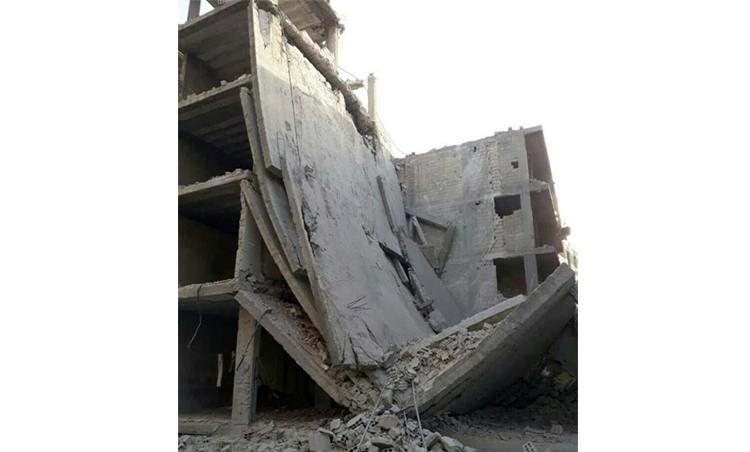Introduction: Because of the fierce military campaign launched by the Syrian regime and their allies on Eastern Ghouta in Damascus Countryside, as of February 18, 2018, the suffering of tens of thousands of civilians has compounded, notably after they became homeless, due to shelling their gatherings and residential neighbourhoods with various types of weapons, either indiscriminately or deliberately at other occasions.
On February 21, 2018, bombarding the residential neighbourhoods of Hamoryah city[1] caused an entire residential neighbourhood to be out of service and to be almost completely destroyed, consequently many people displaced to "safer” areas like Duma city, while others sought refuge inside cellars that lack the minimum conditions of life.
On March 4, 2018, Hamoryah was bombarded with up to 15 explosive barrel bombs, one of which had fallen into basement housing more than 100 families, killing and injuring many civilians, and making the majority of them without any shelter that may save them from the threat of bombardment.
According to Syrians for Truth and Justice/STJ’s field researcher, many of the civilian houses in Eastern Ghouta are unfit for habitation; it is seldom to pass through a neighbourhood and found it save from bombardment. This indicates that the Syrian regular forces and their allies were and still deliberately targeting residential blocks in those areas, in order to tighten on civilians, to deprive them of stability, and to make displacement an easy option for them.
STJ had earlier prepared a report entitled “Tunnelling Underground Becomes the Only Hope to Survive in Eastern Ghouta”, a brief report highlighting the dire humanitarian situation of people living in underground cellars due to the brutal military campaign on Eastern Ghouta. STJ had published another report entitled "Scantiness of Humanitarian Assistance Compounds the tragedy of about 400 Thousand people Trapped in Eastern Ghouta".
The UN Security Council adopted Resolution No. 2401, amid a welcome from the United Nations, which called for a ceasefire throughout Syria for at least 30 consecutive days to enable the delivery of humanitarian aid and the medical evacuation services of the critically sick and wounded. The United Nations Office for the Coordination of Humanitarian Affairs (OCHA) has described the situation in Syria as "bleak" in the wake of the UN Security Council resolution calling for a 30-day ceasefire throughout the country.
First: Destruction of Residential Neighbourhoods in Hamoryah following the Target
On February 21, 2018, the Syrian regular warplanes targeted the residential neighbourhoods in Hamoryah with six high-explosive rockets destroying an entire residential neighbourhood, Iyad al-Ali, who hails from Hamoryah said to STJ. He added:
“Despite the intensification of bombardment, I had rather to stay at my house. However, at 11:00 p.m., while I was sitting for breakfast with children, I heard a strong sound that shook my house whose some of its walls fell; I could not see anything in front of me, and then I started looking for my family inside the house until I found them. After that, we took shelter in the bathroom, fearful of another raid that might target the area.”
Al-Ali added that the rockets dropped on the residential complex had killed 3 civilians and wounded scores, and made an entire residential neighborhood to be out of service. He noted that the shelling had destroyed his house in addition to the opposite building completely; consequently, neither of them is habitable anymore, adding:
“That caused me a deep pain, as I lost my house and many memories, which I had lived in this place, vanished. Following that attack, my family and I decided to resort to cellars in Hamoryah City, so I equipped one of them, supplied it with essential things, and put my children in a place that I thought would protect them from the warplanes attacks.”
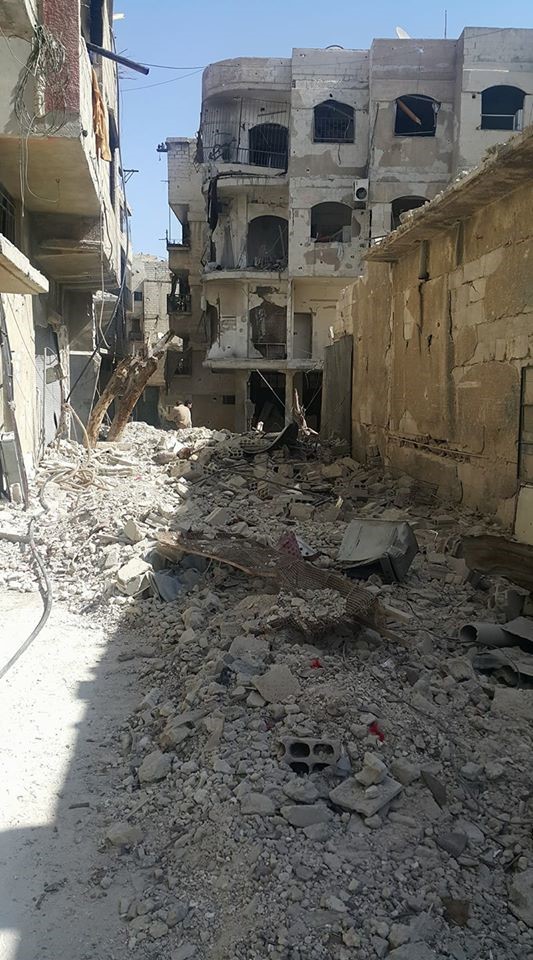
An image shows an aspect of the destruction of the house of Iyad al-Ali, the witness, following an aerial bombardment on February 21, 2018.
Photo credit: STJ
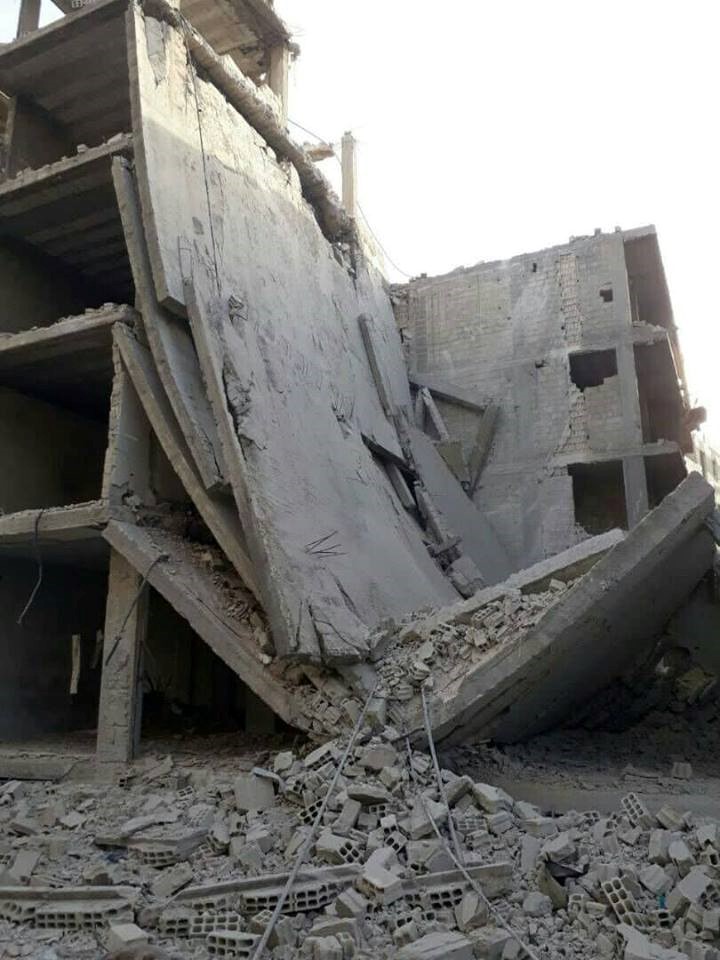
An image shows part of the destruction of civilians’ homes in Hamoryah City, following the bombardment in March 2018.
Photo credit: STJ
On March 4, 2018, warplanes of the Syrian regular forces re-targeted Hamoryah city, but this time with barrel bombs; they dropped more than (15) barrel bombs at the same residential box that had been previously targeted, Iyad al-Ali confirmed, he added:
“The cellar I took as shelter contained more than a dozen families, and next to us was a shelter that housed up to 100 families. At approximately 9:30 on March 4, 2018, the first barrel bomb began to fall, without stopping all that night so that we dare not leave the cellars until 9:00 a.m. the next morning because it is the time the regime and its allies used to ease shelling our regions.”
He said that the bombardment had caused many deaths and injuries among civilians, especially since one of the barrel bombs fell into a cellar located near the cellar in which he sought refuge, which forced some civilians to flee into a nearby cellar, he added:
"Many people have been killed inside the basement, and I have seen many scattered pieces everywhere. We have pulled many families from under the rubble, one of them was a family from the Qaboun neighbourhood, and thank God, all of its members were alive. However, as a result of the shelling, up to 100 families became without any shelter, which made them wander in search of another place so that they might find some safety."
Second: Destruction Rate Reached 100% in Some Cities and Towns of Eastern Ghouta
The engineer "Nizar al-Sammadi", director of the Association of Free Engineers in Damascus countryside, told STJ that late 2011, the Syrian regular forces began storming into Eastern Ghouta cities and towns, with tanks and heavy weapons, which made many people displace from their homes in search of safety fearful of the Syrian regular forces’ violence. He noted that most of the people had displaced particularly to al-Marj area within Eastern Ghouta, and added:
“After the Syrian opposition factions’ seizure of Eastern Ghouta in 2012, many people began to return to their homes, but the regime started a systematic bombardment campaign on Ghouta. The residents had no choice but to displace once again, and at this time, the displacement began to increase, because people not only displaced within Eastern Ghouta, they also displaced outside Ghouta, and the displacement rate continued between the ebb and flow. The population of Ghouta, before opening tunnels linking Eastern Ghouta to Barzeh and Qaboun regions, was approximately 600 thousand, but after the opening of these tunnels, about 200 thousand people left Eastern Ghouta and about 400, 000 people remained there. On the other hand, (41%) people were in Duma and (20%) were in its countryside. While (40%) lived in the rest of Eastern Ghouta towns.”
The recent military campaign carried out by the Syrian regular forces on Eastern Ghouta has caused the displacement of entire cities, towns and neighbourhoods, especially those with the indiscriminate construction (slums) within Duma, al-Sammadi said. He added:
“All residential neighbourhoods have been damaged in Eastern Ghouta, except for the slums within Duma, such as al-Diriya Quarter, Ila’ab and the quarter behind the municipal stadium, which had been damaged more by violent bombardments, so the people of those neighbourhoods located on the outskirts of Duma displaced to its center because it is safer compared to their areas. The destruction rate has increased significantly in Eastern Ghouta cities and towns late 2017, and reached (100%) in some towns, including ar-Rihan, Autaya and Shifuniyah, as all of houses became unhabitable. Moreover, the destruction rate in cities of Duma, Harasta and Hamoryah has reached (70%), whereas it was (50%) in cities of Zamalka, Irbin and Saqba.”
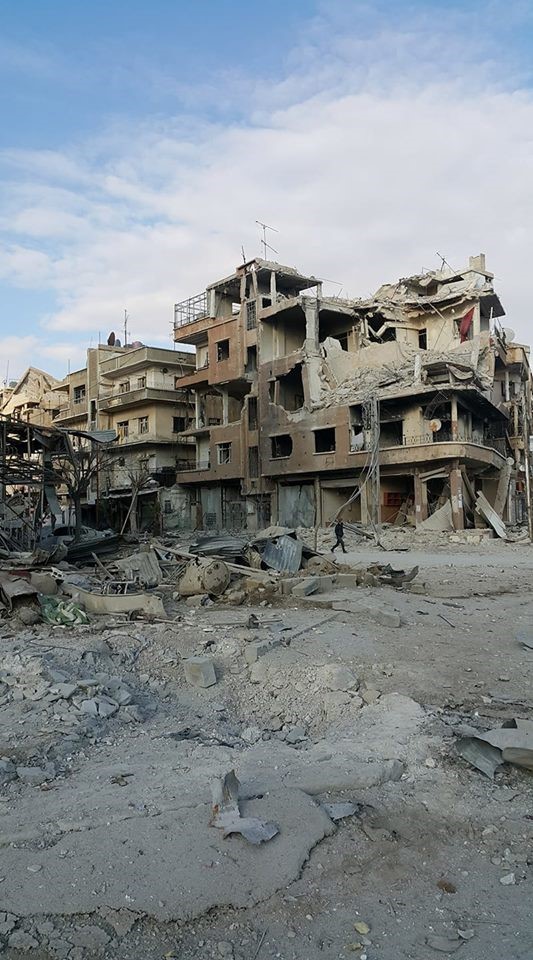
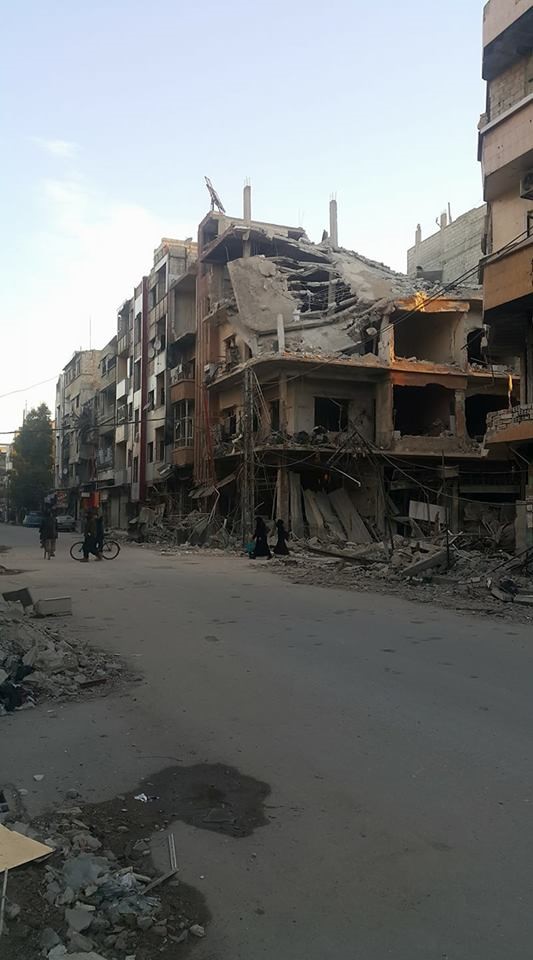
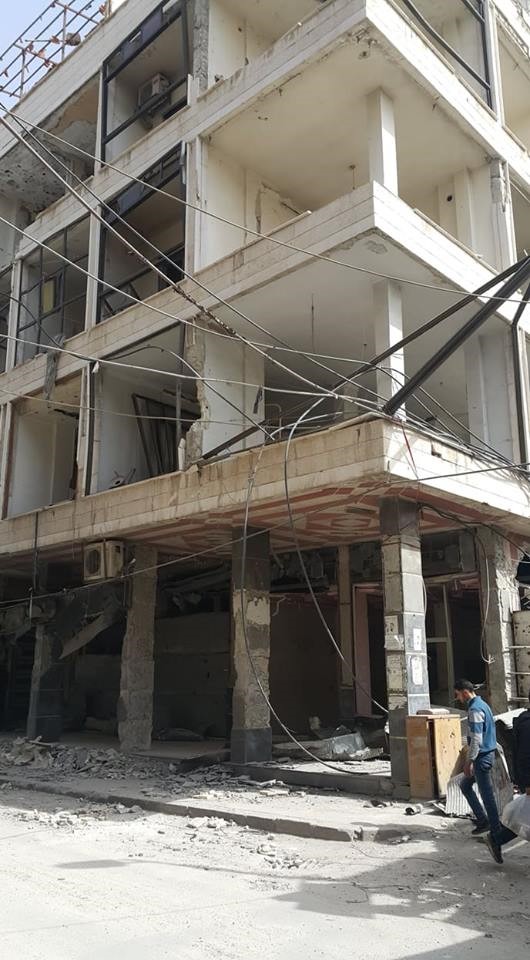
Images show part of the destruction of civilians’ houses in Duma, following the bombardment during February 2018.
Photo credit: STJ
[1] Faylaq al-Rahman controls Hamoryah.

